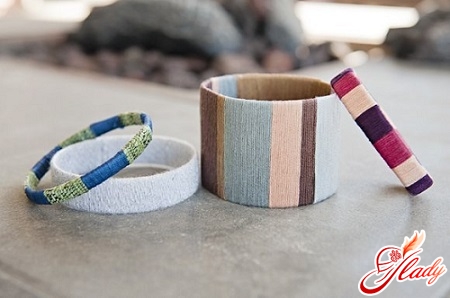
Curtains are one of the most noticeable and strikingdecorative elements. In the main room, in the living room, it is especially important, since its colors can completely change the entire interior beyond recognition. The designer has color, texture, and style in his arsenal. But is it necessary to contact a specialist? Of course not! A good housewife can make excellent curtains for the hall herself! A little effort and creativity - and new curtains will decorate the best room in an apartment or house.
Choosing a color scheme
Should I start making curtains with my own hands?With the choice of color. Carefully examine your hall. What shades prevail in it? Is there a lot of furniture in it? What colors are used in the wallpaper and household items? After you have analyzed the design of your hall, decide what main task your curtains should perform, support the main tone or make a new bright accent? A compromise option is considered optimal: the most successful curtains in halls should refresh the space, expand it, bringing in pleasant color elements and not disturbing the overall harmony of the room. Let's take as an example the most common option for decorating a hall: brown classic furniture and wallpaper in pastel colors, most often with a vertical pattern. In this case, the curtains should carry some coolness and airiness, so a light green or cool yellowish shade will do, which will create the atmosphere of a sunny summer day. If the hall has more modern furniture in light colors, the curtains can be an unexpectedly brighter color - orange, rich green - but in this case it is necessary to complement the interior with pillows in the same range that is used in the curtains.
Choose an invoice
The fabric from which the curtain is sewn is very important.The texture or, in other words, the material from which the curtains will be created with your own hands, largely depends on the functional load of this interior element. If the task is to completely rid the room of prying eyes of street passers-by, then the fabric should be dense, perhaps even tapestry. If the curtains will perform a purely decorative function, you can choose any fabric that matches the tone and color. Nowadays, natural fabrics are increasingly used for curtains, and this is very right. The fact is that synthetic materials not only retain dirt and dust more, but also accumulate static electricity, which is also completely unhealthy for the human body. Natural fabrics require more careful care, but the comfort they create cannot be compared with any artificial fabrics.
Choose a style and model
The main decision at this stage is how muchwill there be curtains? The classic option is thick curtains and light tulle, that is, two fabrics. However, there can be more combinations. For example, in English interiors, three materials are often used - two main and one decorative. However, do not forget that the more different canvases you take, the more carefully you need to think through the design, because multi-color solutions are the most difficult to do on your own. In addition, the choice of a model for curtains in the hall is influenced by texture and color. With a rich, monochromatic main fabric, it is better to use a simple style, since the fabric itself will already decorate the room. With a more restrained color, you should choose a more sophisticated model. Folds greatly diversify curtains - large and small, along the entire length or in some details. Also popular elements of curtain decor are lambrequins, lapels, ties and grabs. The curtain is also decorated with pinned bows or your favorite decorative elements, which can be easily changed. In this way, you can give the hall a completely different look.
We make calculations
After all preliminary decisionsaccepted, you need to draw a sketch of your future curtains, prepare a pattern. This drawing will allow you to correctly calculate how much fabric you will need to make curtains with your own hands. The calculation is made as follows: measure the distance from the hooks of the curtain rod to the floor and add 2 cm. 2 cm of fabric will go to processing the edges, and thus, the curtains will not reach the floor a little. If you prefer a more refined and complex processing of the bottom edge, add another 10 cm. The width of the material is equal to the width of the cornice, multiplied by a factor of 1.2. A higher factor allows you to make deeper folds. Do not forget that dense, heavy fabrics with an abundance of folds look bulky and unsightly. It is important to correctly determine how exactly the curtains will be attached to the cornice. There are different options - loops, rings, ties. Loops are a classic choice, and rings are very difficult to install on your own without special tools. Ties are suitable exclusively for light, airy fabrics. In any case, you need to calculate how far apart the fasteners will be - how many loops or ties you will need. You will need:

We sew the curtains step by step
Now all that remains is to admire the result and wait for guests who will certainly admire the renovated hall!
Remember the little tricks
A unique curtain design, created by the hands of the hostess of the house, will emphasize the individuality of the hall and will allow you to demonstrate excellent taste.









